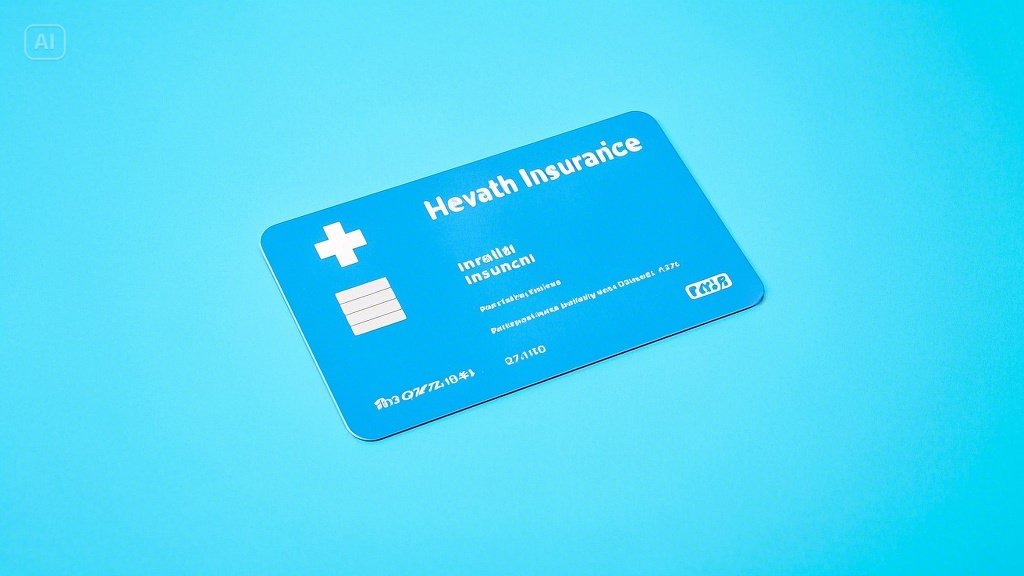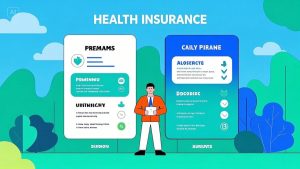
{"aigc_info":{"aigc_label_type":0,"source_info":"dreamina"},"data":{"os":"web","product":"dreamina","exportType":"generation","pictureId":"0"},"trace_info":{"originItemId":"7494240977696197941"}}
Health insurance is essential for managing medical expenses, especially for individuals with pre-existing conditions. If you’re living with a health issue that began before your current health insurance took effect—such as diabetes, asthma, heart disease, or cancer—you likely have a pre-existing condition. For many years, securing affordable health insurance with pre-existing conditions was a challenge. However, thanks to evolving healthcare laws and insurance reforms, coverage is now more accessible and equitable.
In this detailed guide, we’ll walk you through everything you need to know about health insurance for pre-existing conditions—your rights, the types of plans available, how to find the best policy, and what to look out for.
Table of Contents
- Introduction: What Are Pre-Existing Conditions?
- How the Law Protects You
- 2.1 The Affordable Care Act (ACA)
- 2.2 HIPAA Protections
- Common Pre-Existing Conditions Covered by Insurance
- Types of Health Insurance Plans That Cover Pre-Existing Conditions
- 4.1 Marketplace Plans (ACA Plans)
- 4.2 Employer-Sponsored Plans
- 4.3 Medicaid and Medicare
- 4.4 Short-Term Health Plans (Warning!)
- 4.5 High-Risk Pools (Rare but Worth Knowing)
- How to Get Health Insurance If You Have a Pre-Existing Condition
- 5.1 Applying During Open Enrollment
- 5.2 Special Enrollment Periods
- 5.3 Medicaid Eligibility
- 5.4 Working with a Licensed Insurance Broker
- What Health Insurance Plans Must Cover for Pre-Existing Conditions
- Costs: Premiums, Deductibles, and Out-of-Pocket Expenses
- What to Look for in a Health Insurance Plan
- 8.1 Network of Providers
- 8.2 Prescription Drug Coverage
- 8.3 Specialist Access and Copayments
- 8.4 Out-of-Pocket Maximums
- Tips to Manage Pre-Existing Conditions with Insurance
- Conclusion: Health Insurance is Your Right—Even with Pre-Existing Conditions
- FAQs
- 11.1 Can an Insurer Deny Me Coverage Because of a Pre-Existing Condition?
- 11.2 Will I Pay More for Insurance Because of My Condition?
- 11.3 Can I Get Insurance Without a Job?
- 11.4 Are Mental Health Conditions Considered Pre-Existing?
- 11.5 What if I Move States?
1. Introduction: What Are Pre-Existing Conditions?
A pre-existing condition is a medical issue you had before your new health coverage began. It can be as common as allergies or as serious as cancer or heart disease. Some examples include:
- Asthma
- Diabetes
- Cancer
- Depression or anxiety
- High blood pressure
- Pregnancy (yes, it counts)
Insurers once considered these conditions high-risk and often denied coverage or charged higher premiums. But things have changed for the better.
2. How the Law Protects You
2.1 The Affordable Care Act (ACA)
Thanks to the ACA (commonly known as Obamacare), insurance companies can no longer deny you coverage or charge you more due to a pre-existing condition. This rule applies to all ACA-compliant plans, including those sold on the Health Insurance Marketplace and through employers.
2.2 HIPAA Protections
Before the ACA, the Health Insurance Portability and Accountability Act (HIPAA) provided limited protections. HIPAA helped people moving between jobs retain coverage, but didn’t eliminate exclusions for pre-existing conditions. The ACA built upon these protections and made coverage universal.
3. Common Pre-Existing Conditions Covered by Insurance
Virtually all health issues present before your coverage start date are considered pre-existing. Some common conditions that must be covered include:
- Heart disease
- Asthma or COPD
- Mental health disorders (depression, anxiety, bipolar disorder)
- Chronic illnesses (arthritis, autoimmune diseases)
- Neurological conditions (epilepsy, multiple sclerosis)
- HIV/AIDS
- Cancer
4. Types of Health Insurance Plans That Cover Pre-Existing Conditions
4.1 Marketplace Plans (ACA Plans)
ACA plans are the most reliable way to get coverage if you have a pre-existing condition. These plans are:
- Guaranteed issue (you cannot be denied)
- Priced based on age, income, and location—not your health
- Cover essential health benefits
Subsidies may be available based on income, making these plans affordable for many.
4.2 Employer-Sponsored Plans
Group health plans offered by employers must cover pre-existing conditions. Employers cannot charge different premiums based on health status. If your employer offers coverage, it’s often the most affordable option.
4.3 Medicaid and Medicare
- Medicaid: Available to low-income individuals. It covers pre-existing conditions and has no enrollment denial for health issues.
- Medicare: For people over 65 or with qualifying disabilities. Medicare Part B and D cover ongoing treatment and prescriptions.
4.4 Short-Term Health Plans (Warning!)
Short-term plans do not follow ACA rules. They can:
- Deny you for pre-existing conditions
- Exclude coverage for ongoing health needs
- Cancel your policy if you develop a condition
Avoid these if you have or expect to develop health problems.
4.5 High-Risk Pools (Rare but Worth Knowing)
Before the ACA, high-risk pools were the only option for many. While mostly phased out, some states may have legacy programs. Generally, ACA plans are superior and more comprehensive.
5. How to Get Health Insurance If You Have a Pre-Existing Condition
5.1 Applying During Open Enrollment
Open enrollment is the best time to buy ACA-compliant health insurance. It runs:
- Nov 1 to Jan 15 in most states (check your state’s marketplace for specific dates)
You can:
- Shop and compare plans
- Apply for subsidies
- Get covered starting January 1st
5.2 Special Enrollment Periods
Life events may qualify you for a special enrollment period, such as:
- Losing other coverage
- Marriage or divorce
- Moving to a new state
- Having a baby
You typically have 60 days to enroll after a qualifying event.
5.3 Medicaid Eligibility
If your income is low, apply for Medicaid any time of year. Visit https://www.healthcare.gov/medicaid-chip/ to check eligibility.
5.4 Working with a Licensed Insurance Broker
A licensed broker or insurance agent can help you:
- Compare plans
- Understand coverage terms
- Apply for financial assistance
- Avoid short-term or low-coverage policies
Best part? It’s usually free for you.
6. What Health Insurance Plans Must Cover for Pre-Existing Conditions
Under ACA rules, your plan must cover essential benefits related to pre-existing conditions. These include:
| Covered Service | Included in Coverage |
|---|---|
| Hospitalization | ✅ Yes |
| Prescription Drugs | ✅ Yes |
| Emergency Services | ✅ Yes |
| Mental Health & Substance Use | ✅ Yes |
| Maternity & Newborn Care | ✅ Yes |
| Chronic Disease Management | ✅ Yes |
| Lab Services | ✅ Yes |
| Preventive and Wellness Services | ✅ Yes |
7. Costs: Premiums, Deductibles, and Out-of-Pocket Expenses
Your costs depend on:
- Income (affects subsidy eligibility)
- Plan level (Bronze, Silver, Gold, Platinum)
- Location
- Age
Tips to Reduce Costs:
- Apply through Healthcare.gov or your state exchange
- Choose a Silver plan if eligible for Cost-Sharing Reductions (CSR)
- Use an HSA (Health Savings Account) with high-deductible plans
8. What to Look for in a Health Insurance Plan
8.1 Network of Providers
Ensure your doctors, specialists, and preferred hospitals are in-network to avoid extra charges.
8.2 Prescription Drug Coverage
Check if your medications are on the plan’s formulary (approved drug list). Ask:
- Are generics covered?
- Are there co-pays?
- Is prior authorization required?
8.3 Specialist Access and Copayments
For chronic conditions, you’ll likely see specialists. Choose a plan that:
- Doesn’t require referrals (PPOs are best for this)
- Has reasonable specialist copays
8.4 Out-of-Pocket Maximums
This is your financial ceiling for the year. After reaching it, the insurer pays 100% of covered services.
9. Tips to Manage Pre-Existing Conditions with Insurance
- Stick to in-network providers to save money
- Track your deductible and out-of-pocket expenses
- Use telehealth services when available
- Take advantage of wellness programs many plans offer for chronic care
- Stay organized with medical records and bills
10. Conclusion: Health Insurance is Your Right—Even with Pre-Existing Conditions
Having a pre-existing condition no longer means limited options or expensive health insurance. With ACA protections in place, you can get comprehensive, affordable coverage that supports your long-term health. Take time to evaluate your needs, use available resources, and make informed decisions—because managing a pre-existing condition is hard enough without worrying about your insurance.
FAQs
11.1 Can an Insurer Deny Me Coverage Because of a Pre-Existing Condition?
No. Under the ACA, all insurers must accept applicants regardless of health history.
11.2 Will I Pay More for Insurance Because of My Condition?
No. Premiums are based on age, location, and income—not health status or medical history.
11.3 Can I Get Insurance Without a Job?
Yes. Apply through the ACA marketplace or Medicaid, depending on your income.
11.4 Are Mental Health Conditions Considered Pre-Existing?
Yes, and they must be covered like any other condition, including therapy and medication.
11.5 What if I Move States?
You can enroll in a new plan under a special enrollment period. Compare plans on your new state’s marketplace.




